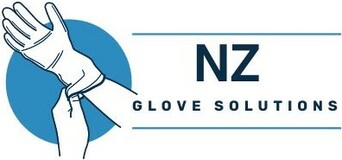The Evolution of Medical Gloves: From Latex to Nitrile and Beyond
The Essential Guide to Medical Disposable Gloves
Medical disposable gloves are more than just a barrier; they're a necessity in many health and safety situations. Whether you’re working in a hospital, a doctor's room or a dentist's office, these gloves have your back. So, let’s explore what makes these gloves so important and the different types available.
What Are Medical Disposable Gloves?
Medical disposable gloves are single-use gloves designed to protect hands from harmful substances. They come in various materials like latex, vinyl, and nitrile, each with its strengths and weaknesses. Think of them as your first line of defense against germs and contaminants. When you slip on a pair of these gloves, it’s like putting on a suit of armor for your hands!
Why Are They Important?
Disposable gloves serve as an essential tool for doctors and general medical practitioners, providing a critical barrier to prevent the transmission of infections between healthcare workers and patients. Using gloves is key to infection control. In a world where safety is vital, these gloves are an absolute must-have.
Types of Medical Disposable Gloves
Latex Gloves
Traditionally, latex gloves were the standard in medical settings due to their high level of sensitivity, comfort, and flexibility. However, the use of latex gloves has seen a massive decline over the years primarily due to the sharp rise in latex allergies among healthcare workers and patients alike.
Nitrile Gloves
Made from synthetic rubber, nitrile gloves are free from latex, thus reducing the risk of allergic reactions. They are known for their superior puncture resistance compared to latex gloves, which is a significant advantage in environments where exposure to sharp objects and instruments is common.
Additionally, nitrile gloves do not require powdering, which eliminates another potential allergen and provides a cleaner usage experience.
Vinyl Gloves
Vinyl gloves are good for light tasks. They provide basic protection and can be used for non-hazardous situations, like cleaning. However, they don’t offer nearly the same level of durability as nitrile. If you need gloves for very simple chores, vinyl can be a good fit, but they won't cut it for high-risk activities.
What are the preferred gloves for Doctors?
Nitrile gloves have emerged as a preferable alternative in the medical community. The move from latex to nitrile gloves in healthcare highlights the industry's dedication to safety and flexibility. This change reflects the continuous advancements in medical safety protocols, effectively protecting both patients and healthcare providers during procedures.
What Protection does Nitrile Gloves offer?
Why are Blue or White Gloves used in the Medical Industry?
This visibility is crucial in maintaining hygiene and safety standards, as it allows for the immediate recognition and replacement of compromised gloves, reducing the risk of infection transmission.
White gloves are similarly employed for their high visibility against blood and other bodily fluids, highlighting punctures, tears, or stains that could compromise the glove's integrity.
The contrast provided by both blue and white gloves against the colors of human tissues and fluids is a strategic choice, enhancing safety measures during procedures.
Conclusion: Don’t Go Without Them!
In summary, medical disposable gloves are a vital part of keeping both patients and healthcare workers safe. Whether you're in a hospital or in the doctor's rooms, don’t underestimate the power of a simple glove. Protect your hands and those around you by making the smart choice to wear them. It’s an easy step in the right direction for health and safety!
Posted: Tuesday 14 May 2024

